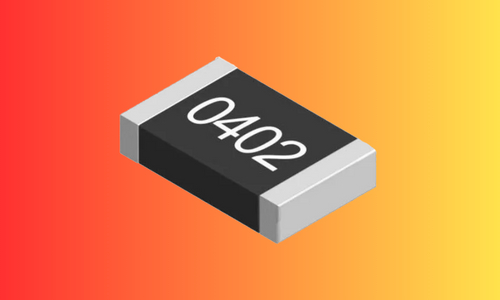Types of Resistors: Construction, Symbol and Applications
Hello friends! Welcome back to ElectroDuino. In the last tutorial, we discussed “What is Resistor: Definition, Types, Symbol, Color Code, Circuit, Application“. This blog is based on the Types of Resistors and they are Construction, Symbol, and Applications.
Introduction
Resistors are one of the most fundamental and widely used components in electronic circuits. They play a crucial role in controlling the flow of electric current and voltage within a circuit. However, not all resistors are created equal. In this article, we will take an in-depth look at various types of resistors, their unique characteristics, and their applications. So, let’s dive into the fascinating world of resistors!
Types of Resistors
There are numerous types of resistors available in the market, that are used in different types of electronic circuits. Different types of resistors have different properties depending upon their construction and manufacture. Resistors are available in different shapes, sizes, and materials. Here we will discuss all possible resistor types one by one with their applications as follows.
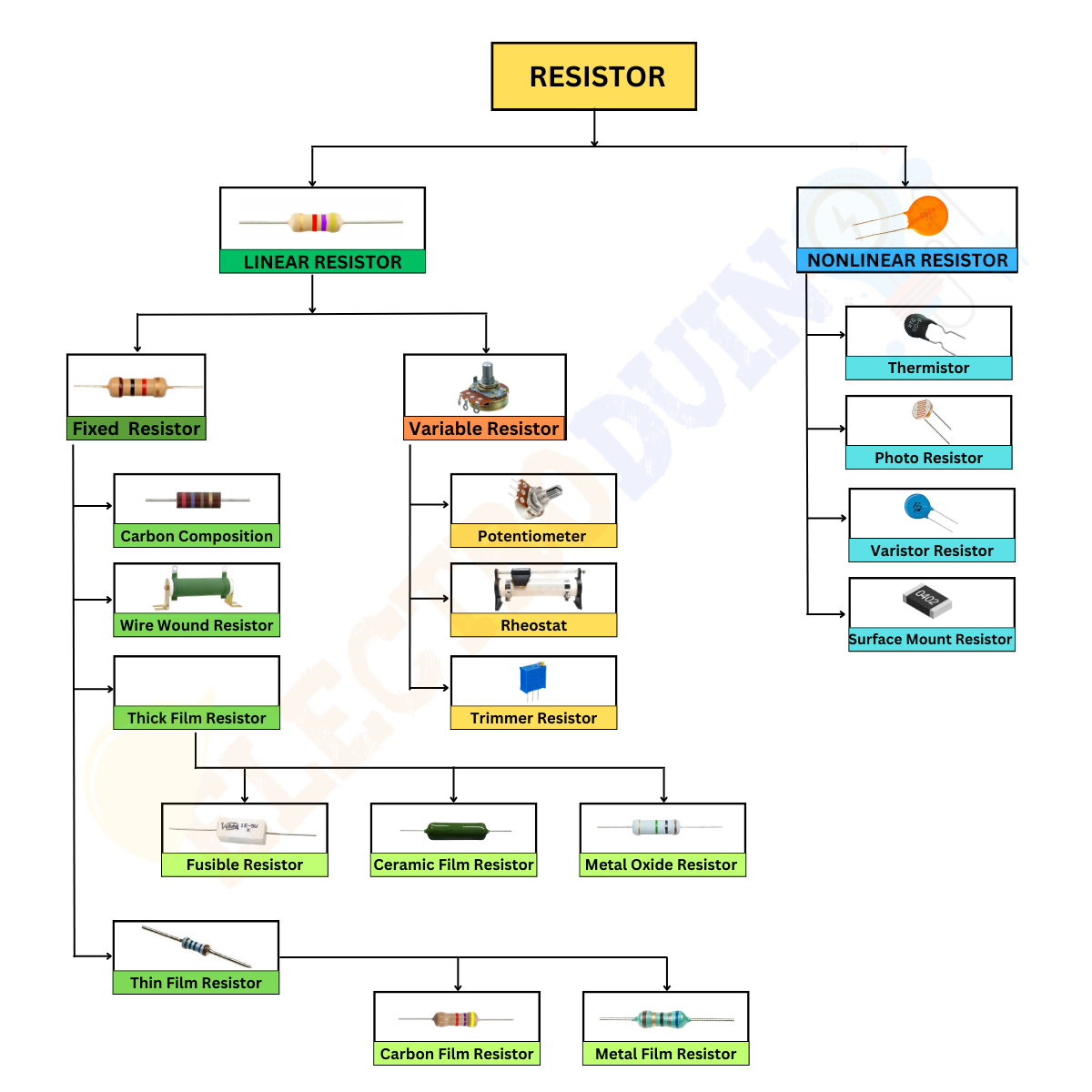
Normally resistors are classified into two major types namely.
- Linear resistors
- Non-linear resistors
1. Linear Resistors
Linear resistors are an essential component in electronic circuits, which the residence value varies based on the applied temperatures and voltages. A linear resistor is so named because it follows Ohm’s Law linearly. This means that they possess a linear relationship between voltage and current, meaning the current flowing through them is directly proportional to the voltage applied across them.
In a linear resistor, the relationship between voltage (V), current (I), and resistance (R) is expressed as
V = I × R
This means that for a given resistor, the voltage across it is directly proportional to the current passing through it and inversely proportional to its resistance. This linear relationship is the key characteristic that defines a linear resistor. The linear relationship is ideal for many applications, making these components reliable and predictable in various circuit designs. Linear Resistors are categorized into two types:
- Fixed Resistor
- Variable Resistor
A. Fixed Resistor
The Fixed Resistor is one of the most widely used types of linear resistor whose resistance a predetermined and provides a constant and unchanging level of resistance value. Unlike variable resistors, fixed resistors offer a consistent resistance value, which remains constant during the device’s operation. Instead, they provide a constant and unchanging level of resistance throughout their operation.
Fixed resistors come in various shapes, sizes, and materials, but their fundamental purpose remains the same: to impede the flow of electric current and regulate the voltage across a circuit. This stable and unwavering resistance makes them an essential component in a wide range of electronic devices and applications.
Fixed resistors are constructed using various materials and techniques to achieve the desired resistance value and stability. Some common types of fixed resistors include:
- Carbon Composition Resistors
- Wire Wound Resistor
- Thick Film Resistor
- Thin Film Resistor
a. Carbon Composition Resistors
Carbon composition resistors are among the oldest and most traditional types of resistors. They consist of a mixture of finely powdered carbon and a binding material, molded into a cylindrical shape and enclosed in an insulating coating. The carbon composition resistors are available in the range of resistance value of 1 ohm to 25 megohms and in power rating from ¼ watt to up to 5 Watts. They are commonly used in general-purpose circuits, audio applications, and low-frequency applications. These resistors offer high stability, low inductance, and low cost, making them suitable for general-purpose applications.
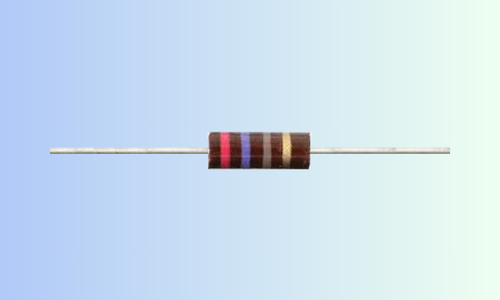
b. Wire Wound Resistor
Wire wound resistors are made by winding a resistive wire (usually nichrome or similar alloy) around an insulating core or rod. The resistive wire of the Wire wound resistors is generally made of Tungsten, manganin, Nichrome, nickel, or nickel-chromium alloy, and the insulating core or rod is made of porcelain, Bakelite, press bond paper or ceramic material, etc. They are known for their high power handling capability and low-temperature coefficient of resistance. They are available in the range of resistance values of 1 ohm to 200 Kilo ohms and in power ratings from 2 watt to up to 100 Watts. They are commonly used in general-purpose circuits, audio applications, and low-frequency applications. Wire wound resistors find applications in power electronics, power supplies, motor control circuits, and high-current circuitry where high levels of power dissipation are required.
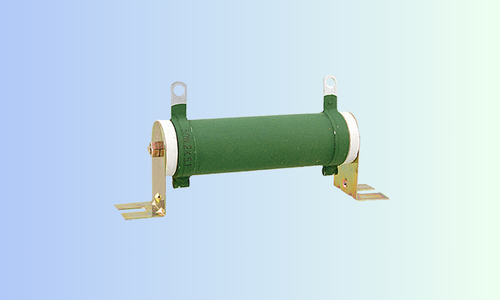
c. Thick Film Resistor
Thick film resistors are created by printing a resistive paste (usually a mixture of glass and metal oxides) onto a ceramic or glass substrate and then firing it to produce a resistive film. These resistors offer low cost, compact size, and excellent stability. They are commonly used in consumer electronics, automotive applications, and telecommunications. The thick film resistors are further subdivided into three major types
i. Fusible Resistor
Fusible resistors, also known as fuse resistors, are designed to function as both a resistor and a fuse. They are constructed with a resistive element that is specially designed to break and open the circuit in the event of excessive current flow, acting as a protective measure against overcurrent conditions. Generally, the resistance value of fusible resistors is less than 10 Ohms. Fusible resistors are commonly used in applications where safety and protection against short circuits Like TV sets, Amplifiers, and other expensive electronic circuits.
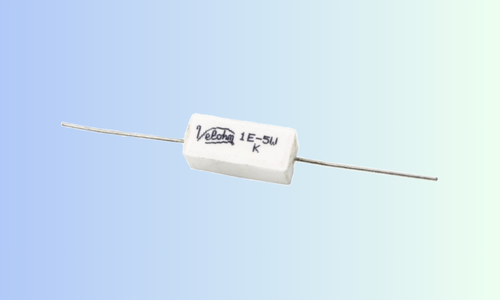
ii. Ceramic Film Resistor
A ceramic film resistor is a type of fixed resistor designed with a resistive element composed of metal glaze or metal oxide deposited onto a ceramic substrate. This thin film of resistive material allows the resistor to achieve precise resistance values, making it an excellent choice for applications that demand accuracy and consistency.
The manufacturing process involves depositing the resistive material onto the ceramic substrate and then trimming it to achieve the desired resistance value. This precision ensures that ceramic film resistors meet strict tolerance requirements, delivering consistent and reliable performance.
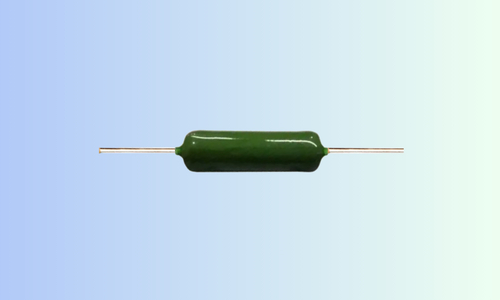
iii. Metal Oxide Film Resistor
Metal oxide film resistors are similar to metal film resistors but use a metal oxide (usually tin oxide) as the resistive material. This type of resistor offers higher power handling capability and better stability at high temperatures compared to metal film resistors. Metal oxide film resistors find applications in power electronics, industrial equipment, and high-temperature environments.
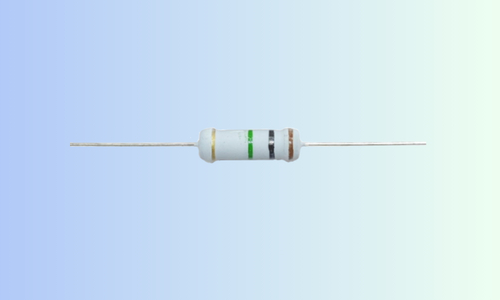
d. Thin Film Resistor
Thin film resistors are similar to thick film resistors but have a much thinner resistive film. They are made by depositing a thin layer of resistive material (typically a metal alloy such as nichrome) onto a ceramic or glass substrate. Thin film resistors provide high precision, low noise, and good stability, making them ideal for applications requiring precise and accurate resistance values, such as in measurement equipment and medical devices. The thin film resistors further subdivided into two major types
i. Carbon Film Resistor
A carbon film resistor is a type of fixed resistor built with a resistive element composed of finely dispersed carbon particles mixed with a binder. This carbon mixture is deposited onto a ceramic or fiberglass substrate, forming a thin film that determines the resistance value of the resistor. The resistance value is determined by the thickness, length, and width of the carbon film.
These resistors are available in various resistance values, making them versatile for a wide range of applications. They are characterized by their cylindrical or rectangular shape, with colored bands indicating their resistance and tolerance ratings.
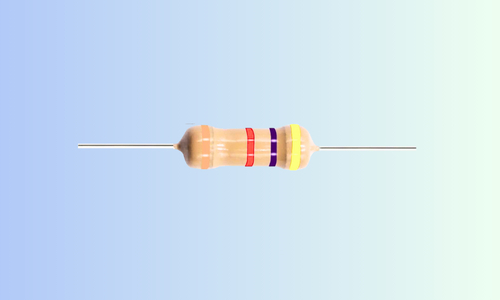
ii. Metal Film Resistor
Metal film resistors are constructed by depositing a thin layer of metal (typically nickel-chromium or similar alloys) onto a ceramic or fiberglass substrate. The metal film provides the resistive element. Metal film resistors offer high precision, low noise, excellent temperature stability, and low-temperature coefficient of resistance. They are commonly employed in audio amplifiers, instrumentation circuits, and high-frequency applications where accuracy and stability are paramount.
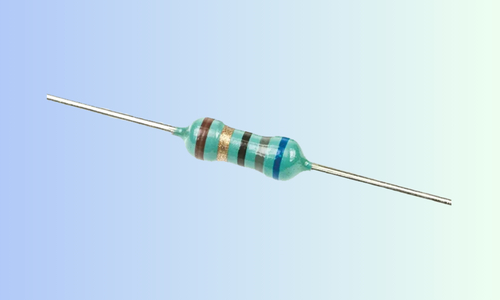
B. Variable Resistor
The variable resistor is an electronic component that allows for the adjustment of its resistance value. Unlike fixed resistors, which have a constant resistance, variable resistors empower users to alter their resistance values, tailoring electronic characteristics such as voltage, current, and signal levels as per specific requirements. Their variable nature allows for precise regulation of current or voltage levels within a circuit, making them versatile tools for numerous applications. The variable resistors are divided into three major types, these are
1. Potentiometer
Potentiometers are the most common type of variable resistors and are widely used for adjusting voltage levels or creating voltage dividers. They consist of a resistive track with three terminals: two fixed terminals and a movable terminal or wiper. By changing the position of the wiper, the resistance between the wiper and the fixed terminals can be adjusted, allowing for precise control of voltage or signal levels. Potentiometers are commonly used in audio equipment, volume controls, and tuning circuits.
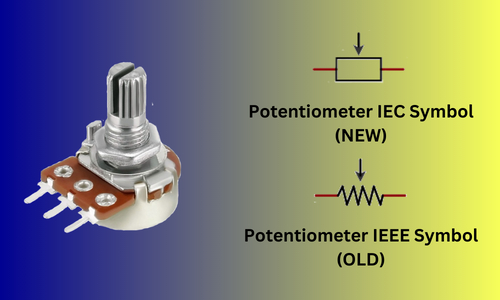
2. Rheostat
Rheostats are variable resistors specifically designed for controlling current rather than voltage. They are constructed similarly to potentiometers but with only two terminals, allowing the current to flow through the entire resistive track. By adjusting the position of the wiper, the resistance of the circuit can be varied, thereby controlling the amount of current flowing through it. Rheostats are commonly employed in applications such as motor speed control, heating elements, and lighting dimmers.
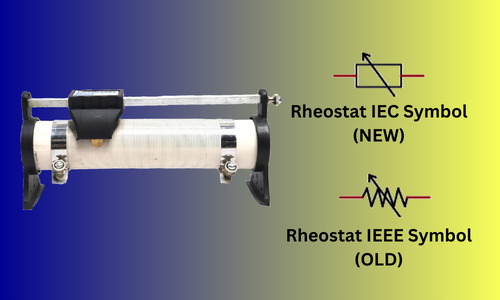
3. Trimmer Resistor
Trimmer resistors, also known as preset resistors or trim pots, are miniature variable resistors designed for adjustment during the initial circuit setup or calibration. They are typically used to fine-tune resistance values in circuits where long-term adjustments are not required. Trimmer resistors are compact in size and often mounted directly on the circuit board. They find applications in circuit calibration, tuning of oscillators, and precise resistance matching.
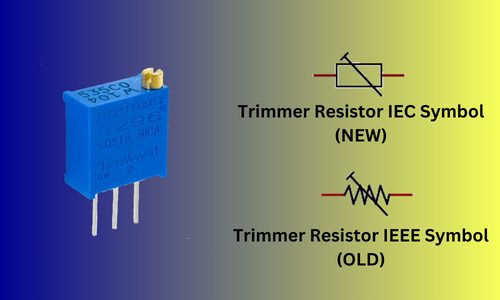
2. Nonlinear Resistors
A nonlinear resistor is an electronic component that possesses a resistance value that changes significantly with variations in the applied voltage. Unlike linear resistors, whose resistance remains constant regardless of the voltage across them, nonlinear resistors display an adjustable resistance that responds to changes in the electrical environment.
Unlike linear resistors, which follow Ohm’s Law and exhibit a constant resistance, nonlinear resistors display a nonlinear relationship between voltage and current. This means that as the voltage across a nonlinear resistor changes, its resistance value also alters. The relationship between the voltage (V) applied across a nonlinear resistor and the current (I) flowing through it is not linear, as seen in Ohm’s Law (V = I × R). Instead, the resistance (R) of a nonlinear resistor is influenced by the magnitude of the voltage across it, making it a voltage-dependent device.
Nonlinear resistors are commonly used as voltage-sensitive elements that protect electronic circuits from voltage surges and transient events. They have high resistance at normal operating voltages but quickly decrease their resistance when exposed to high voltages, limiting the excessive flow of current and safeguarding connected devices. The thin film resistors are broadly divided into four major types, these are
- Thermistor
- Photo Resistors or Light Dependent Resistors (LDRs)
- Varistor Resistor
- Surface Mount Resistor
A. Thermistor
Thermistors are resistors whose resistance value changes significantly with temperature. They are made of semiconductor materials with a high-temperature coefficient of resistance (TCR). Thermistors can be classified into two types: positive temperature coefficient (PTC) and negative temperature coefficient (NTC) thermistors. PTC thermistors exhibit an increase in resistance with temperature, while NTC thermistors show a decrease in resistance. They find applications in temperature sensing, overcurrent protection, and temperature compensation circuits.
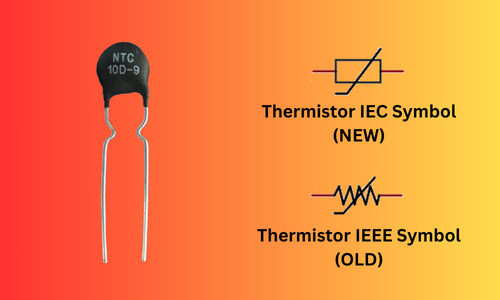
B. Photo Resistors or Light Dependent Resistors (LDRs)
Light-dependent resistors, also known as photoresistors or photocells, are resistors whose resistance varies with the intensity of light incident on them. They consist of a semiconductor material that exhibits changes in resistance when exposed to light. As the incident light increases, the resistance of the photoresistor decreases, and incident light decreases, the resistance of the photoresistor increases, that making them suitable for light-sensitive applications such as automatic light control. LDRs are commonly used in light-sensing applications, such as automatic lighting systems, cameras, and light meters.
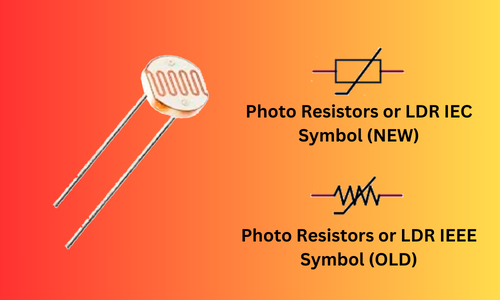
C. Varistor Resistor
Varistors, short for variable resistors, are nonlinear resistors specifically designed for voltage-dependent behavior. They are made from semiconductor materials, such as metal oxide varistors (MOVs) or silicon carbide varistors. Varistors have high resistance at low voltages but exhibit a sharp decrease in resistance when subjected to excessive voltage levels. This property makes them effective in surge protection applications, as they divert excessive current and protect sensitive components from voltage spikes. Varistors are commonly used in power supplies, surge protectors, and transient voltage suppression circuits.
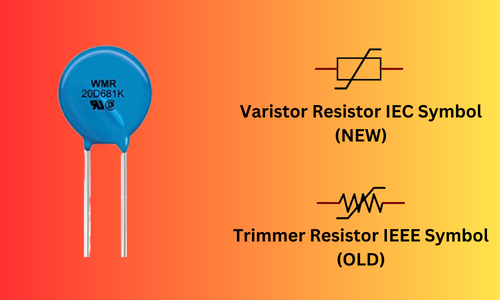
D. Surface Mount Resistor
Surface mount resistors (SMD) are designed for surface mount technology, where components are mounted directly onto the surface of a printed circuit board (PCB). SMD resistors are available in various packages, such as chip resistors, and are characterized by their compact size, lightweight, and suitability for automated assembly. They are widely used in modern electronics, including mobile devices, computers, and telecommunications equipment.
